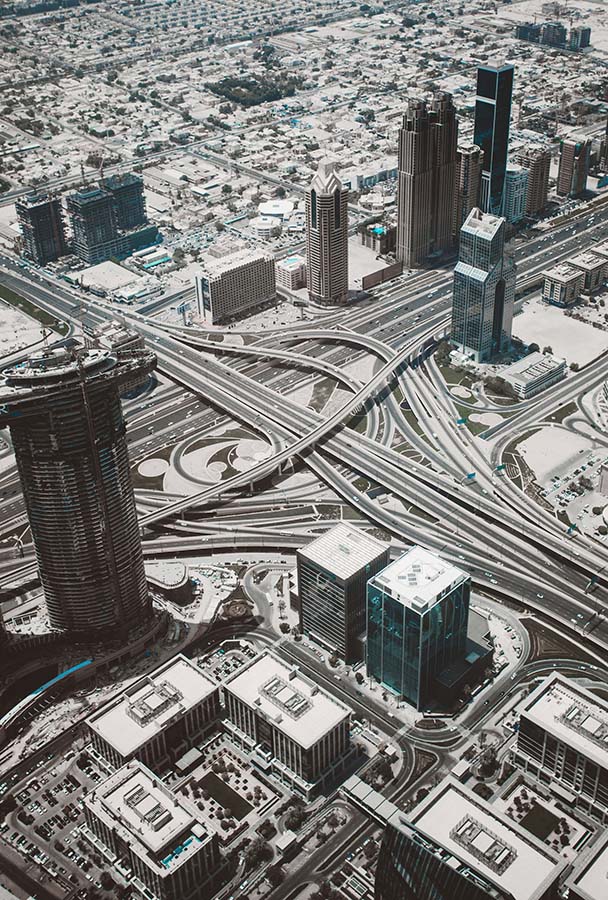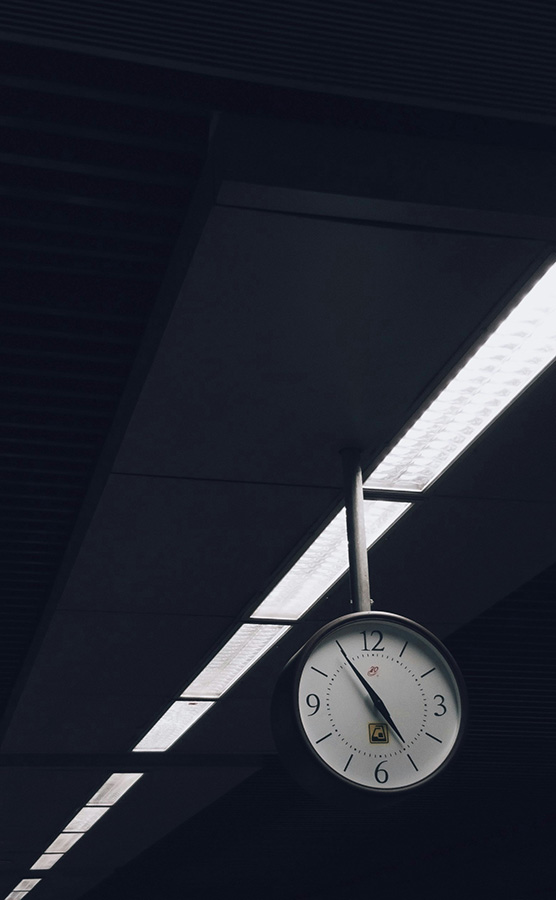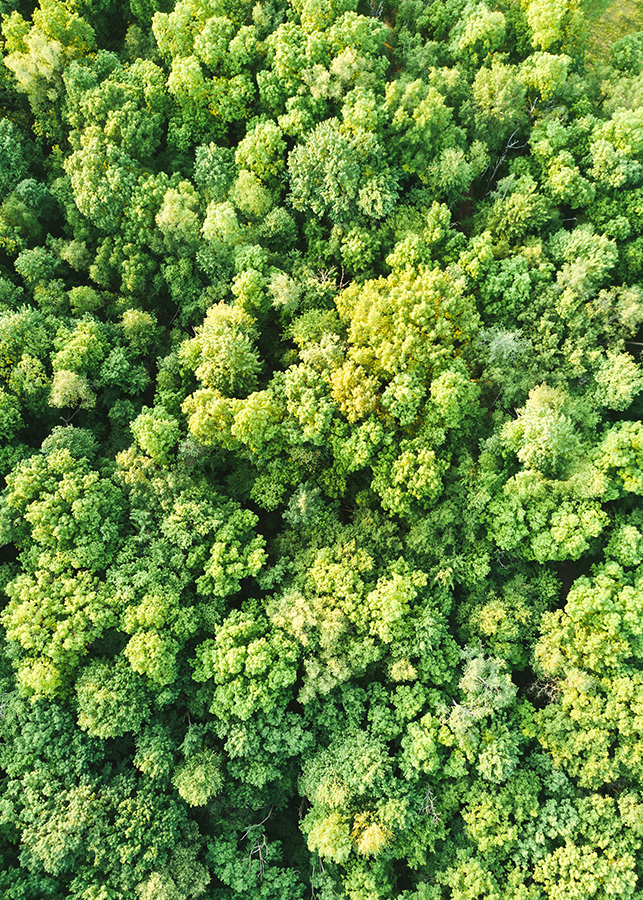What is perfection? Is it a good thing? It is hard to achieve, for sure. And we as designers try to go down this road to design perfect products and experiences for our users. But is a perfect experience for our users really good – for them, for us, for the world? I want to take you on a journey from perfection to imperfection, and have a look at what perfection is, how it is achieved, why it might be a lot less perfect when you look at it from another angle, and why perfection might be an endless rabbit hole rather than a state we could ever achieve. I want to show you why seeking perfection is a lie that causes a lot of harm, to us, to society and to the planet. And I will talk about why we need a paradigm shift, what we can learn from nature and how to move from perfection to imperfection for a better future for us all.
Seeking perfection creates injustice by default
To start this journey, let’s have a look at a short history of perfection. In the early 1900s, our cities had a very different landscape compared to the urban environments we see today. There were mainly pedestrians on the streets and a few horses. Nothing else. Then, the first cars started to appear. Accidents happened more and more frequently. Pedestrians got injured and killed. And what was our solution to this problem? We started to optimize our cities for cars by dividing the landscape for cars and pedestrians and giving the majority of space to cars – trying to make mobility more efficient and convenient for them. And by doing this we de-humanized our cities. We took most space on the streets from pedestrians and cyclists and gave it to cars.

By seeking perfection for somebody or something, we always take from somebody else. Perfection is not an absolute state. It is just one perspective in a complex, bigger system. The perfect solution always comes with negative impacts on other elements / players in the system. Seeking perfection creates injustice by default. Because perfection is a very exclusive and egoistic concept. Because it always prioritized the perfect state for someone or something over the impacts on other actors in the surrounding ecosystem.
As designers (and digital product builders) we try to build the best (aka perfect) solutions for our users: we observe, emphasize and analyze to understand the needs and desires of our users and customers to build the best service for them (well and for the business). But our perfect solution for the user is always part of a bigger, complex system which creates negative impacts on other players in this system.
Here’s an example. A perfect delivery app might build up a great UX and convenience for the user. But at the same time the delivery rides are not paid well or small grocery stores have to close because they cannot match the business model of the delivery service.
By seeking perfection for a group of people we create challenges on other ends – always. But what about ourselves? Does seeking for perfection make us better – day by day?
Perfection is one of the catalysts of the growth economy
Imagine a nice and very friendly world. People live together in peace and joy. They are friendly, they work, but also take their time for a chat with the neighbour or customer. It is a wonderful world. This is the world as described in the beginning of the book “Momo” by Michael Ende. But soon things started to change. New people – The Grey Gentlemen – appeared. They seemed to be very friendly at first. But then they began to explain to the people that they could be much more efficient if they didn’t waste their time on useless things. The barber could serve more clients per day, if he would avoid chatting with every client after the haircut is finished.

The Grey Gentlemen explain this to all the people in this wonderful world and by this they lure the people into giving them their time. Because The Grey Gentlemen need it to live, they smoke it in so-called “time cigars”. But by making maximized efficiency the main paradigm, they create a perfect world for themselves, while creating a sad and grey world for all the other people. In the end of the book the girl Momo defeats The Grey Gentlemen, gives back the stolen time to the people and re-creates the wonderful and joyful world from the beginning.
The book was written in the 70s and still is a perfect metaphor for today’s world that is designed to steal our time and attention by manipulating us through the digital worlds running on our devices. Youtube, Netflix, TikTok, all social networks, etc. are built to keep us on their platform for as long as possible. Their success is our harm. And the same happens on many ends in our lives. Digital tools and services make us more efficient, but in the end just squeeze more time out of us to do or fulfil more things.
The Grey Gentlemen are the perfect example for this mechanism. They tried to create a hyper-efficient world, perfectly aligned, by explaining to people that this is the state they want to achieve. But instead it was only perfect for The Grey Gentlemen, and not very beneficial for all the other people. It changed their world and lives for the worse.
Perfection is the growth narrative taught to us. We should fulfil more, be more effective, achieve more, get better, use our time “wisely”. In fact it is the carrot on a stick in front of our nose. In digital, we design perfect websites, apps and services to make us more efficient – to have us fulfil our goals even faster, to be able to achieve even more. Perfection is one of the catalysts of the growth-economy. It is never enough, we always seek for more and at the same time do not realize that it will never be enough, and instead every efficiency gain is just filled with more things to do, watch or consume. By seeking perfection we do not only harm others, we also harm ourselves.
The imperfection of nature
Let’s have a look at nature and see how nature “works”. A forest is a perfect example. The trees in wild forest (not a monoculture forest) co-exist and give each other room. If you look to a forest from above you can see that the trees perfectly align their treetops to each other, leaving room between them, and also leaving room for some light to get through so new trees can grow. An extra benefit of such a forest has a much higher resistance to storms. Trees also communicate via their roots and can even support each other by exchanging “nutrients”. A strong tree can support a weak tree next to it. And a forest is an even more complex ecosystem: Fungi networks in the ground collaborate with trees and various insects and larger animals co-exist under the treetops. The point is: none of these parts of the forest are perfect or developed to the maximum. Instead the ecosystem of the forest balances itself, to create a state that is valuable for every part of the system.

Nature is never perfect. Nature is in a constant flow of adjustment and balancing. Nature does not seek perfection for one part, but for balance of parts. By accepting imperfection for every part on its own, Nature is able to create balance. The combination of the imperfect state of every involved factor creates a state where every factor can coexist. Nature finds a compromise between all factors and by this creates a stronger system for all actors.
Imperfect Design
As designers, as digital product builders, as people in this world, we should follow the example of nature. We should shift from trying to create the next perfect service for users and business to building services that are balanced with their surrounding ecosystems. We have to understand that seeking perfection is a road that leads to harm for others and ourselves. We should start seeing the true beauty in imperfection and replace the paradigm of perfection with a new paradigm of balance.
When building and designing digital products, we try to build the best product for our users. We need to change this. We should not seek the perfect product for our users anymore, instead we should design from the beginning for a solution that is balanced with its surrounding ecosystem and on purpose, not just perfect to the user.
To start working towards more balance we can start with incorporating three steps in the beginning of our design processes. The first goal is to create a holistic understanding of our product and to see it or the users not in the center of our doing, but instead as one equal part of a bigger ecosystem.
- Understand the surrounding ecosystem Before we start designing solutions for our users we have to understand the surrounding ecosystem. Who are the involved actors that are not our users? Are there non-human actors involved? How is your product connected to these actors?
- Make the negative impact of our product/service visible Once we have understood the surrounding ecosystem, we can make the potential negative impacts of our product or service visible. Which actors are impacted negatively? What are the negative impacts? What indirect impacts might occur?
- Balancing user and business needs with the surrounding ecosystem and its other actors Once we have dismantled negative impacts to the ecosystem we can seek for connections with the user- and business-needs we want to fulfil. Which of these needs are very harmful? This is an additional information layer to the classic user- and business-needs to help us understand and evaluate the negative impacts of each of them
With this level of transparency, we can create a design process that reduces negative impacts, prioritizes the needs and ideas that add to a balanced system and evaluate each new idea in terms of how it affects the surrounding ecosystem.
In the end we can break it down to one simple question, we should ask ourselves about everything we design: how does this design, idea, feature or need affect all the other actors? Does it create a positive or negative impact? And what would be necessary to balance it to the surrounding ecosystem?
Now you might think: “Okay, sounds good, but what can I do? How can I change these things? I am just a small designer or developer or product manager.” The easy answer is: Be imperfect. This is not about doing everything right. It’s not about being perfect. It is about changing our mindset and integrating it step by step into our daily work. No matter how small the steps might seem. And there are often small changes we can do in the first place. By focusing on the less perfect solution for the user, we can add to a more balanced ecosystem and shift from “best”, “everything”, “always” to “a little less for the good of all”.
Imperfection is key to balance
If you think about it, imperfection might be the perfect (in italic or quotation marks) solution to create a truly sustainable world. It is the solution to create balanced systems. The digital products, services and experiences we design and build need to be balanced with their surrounding ecosystems and the surrounding world – to create less harm. We do not need the next “perfect solution for the users” or “to know even more about our customers to provide the perfect service”. We need to see all the digital things we design and build in the bigger context or its surroundings. That way, we will not only protect all actors, but create a better world and future for all.
Thorsten Jonas is a Sustainable UX and Responsible AI consultant, keynote speaker and founder of the SUX Network. He is guiding teams and companies in crafting sustainable, responsible and ethical digital products and co-leads the UX committee for the UX chapter of the W3C Sustainable Web Design Guidelines.
